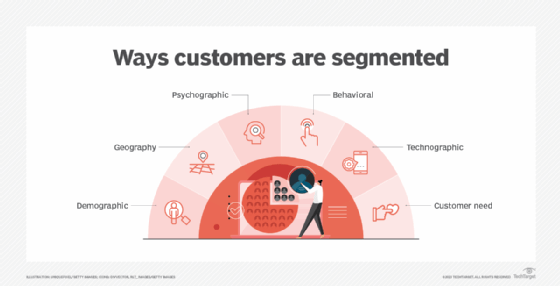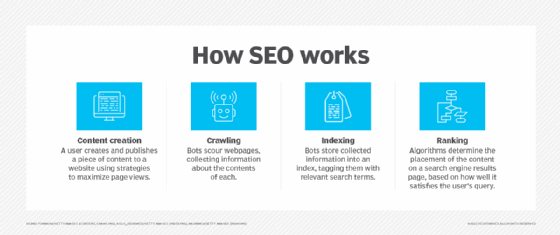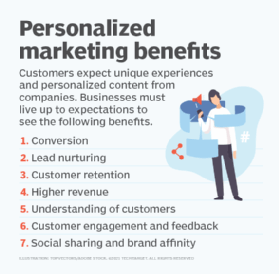marketing campaign management
What is marketing campaign management?
Marketing campaign management is the planning, executing, tracking and analysis of direct marketing campaigns. These tasks span the entire lifecycle of a marketing campaign, from inception to launch to evaluation of results.
With technologies like marketing automation software, analytics platforms and new delivery methods and channels, campaign management has become a complex, far-flung proposition that takes place in email, on social media platforms, on company websites, communities and blogs, and on mobile devices. As the technology has become more sophisticated, it has enabled more tasks to be automated, more personalized messaging and marketing content.
What makes a successful marketing campaign?
To be successful, every marketing campaign should address audience segmentation, content development, email automation, omnichannel communication and message personalization.
Audience segmentation
The first step in marketing campaign management is to define and categorize audience segments -- also known as customer segmentation. Marketers often use demographic information, such as age, gender, residence or location, as attributes to define categories, along with numerous other predefined attributes. Audience segmentation enables marketers to target campaign messages and content to the appropriate recipients.
Audience segmentation also converges with customer journey mapping, which is the visual representation of customers' pathways to purchase or nonpurchase. Customer journey mapping depicts where customers first interact with a company, where they go online or in physical locations and what they do.
Successful use of audience segmentation begins with building customer profiles to understand customers' behaviors and preferences. For instance, a travel company might send a quiz to gauge customers' interests and personalize their travel options. With a high level of participation, the quiz can provide a wealth of personal data the company can use to target offers to customers.
Personal profiles are a great way to avoid pitching irrelevant marketing content to consumers. For instance, travelers interested in thrill seeking and adventurous activities most likely are not interested in a tranquil, relaxing beach vacation. Being more targeted will ensure marketing content resonates with their customers.

Content development
Marketers focus on creating informative content that educates an audience not just about a specific product or service, but often about the larger market or context in which that service sits. Much of this content creation has come to be known as inbound marketing, which is the method of targeting audience members with informative content and drawing them back to company websites, social media platforms or other online destinations that marketers use to engage customers.
Content development should focus on customers' experiences with an emphasis on findability, focus and value. Findability is a combination of search engine optimization (SEO) and real-world communications clarity. Focus and value are both defined by the customer. A company might have information about its audience, but it doesn't matter if its content isn't relevant or valuable to its intended customers and can't be easily found using a search engine.

Email automation
Email automation enables marketers to segment audience lists automatically and schedule message drops in advance. Instead of having to create lists and schedule delivery manually, marketing automation enables segmentation and delivery to happen automatically.
There are several types of tactical automated emails to use, including the following:
- Autoresponders. Follow-up email messages sent after someone has filled out a form. The purpose is to reinforce the brand and deliver the requested content to the correct email address.
- Sales nurturing emails. Marketers can help sales teams by creating nurturing programs to scale follow-up efforts, and let sales know when to reach out to current or potential customers.
- Snackable content emails. Most commonly used in nurturing programs, snackable content is short and meant to be shared. Their purpose is to drive brand engagement.
- Invitational emails. Used to invite people to webinars, events and other special campaigns, with the goal of having the person register and confirm interest.
- Identifier emails. Used to determine a customer's stage in the buyers' journey. The goal is to have the customer self-select into a stage of the buyers' journey by taking direct action via a link click.
Message personalization
Message personalization and ad retargeting are marketing techniques designed to show prospects and customers that a brand knows and understands them. With message personalization, a company may send an email that features a certain category of products that a customer has previously browsed online. Ad retargeting displays a company's banner ads in a search browser, even after the user has stopped searching on that site.
Companies have gone to various lengths to personalize marketing. Some efforts fall flat, while others are successful. An example of a successful personalized campaign is BustedTees, an online T-shirt company. In 2013, it increased email revenue by 8% when it switched from sending dreaded email blasts to personalizing send time based on time zones and past opening behaviors of their customers.
On the opposite end, in 2014, content sharing site Pinterest emailed collections of content to single women congratulating them on their upcoming weddings, misinterpreting their interest in wedding-related content for actual impending nuptials.
Omnichannel communication
Audiences can travel seamlessly between desktop computers, smartphones, physical stores, social media platforms and more to browse products and services. Companies use e-commerce platforms, marketing automation and other tools to provide a seamless experience between these medium and to capture customers' behavior in the process. Companies can then use this data later to offer personalized marketing messages to solidify the relationship with customers and remind them of their brand.

A strong presence on social media has become increasingly important for communication between companies and their customers. An omnichannel approach puts the customer at the center of its strategy. Digital customers use multiple channels simultaneously and expect consistency.
Marketing analytics
Marketing analytics provides marketers with a variety of statistics that enable them to see how many people a campaign reaches, which content is most effective in converting prospects into customers, and which products and services tend to sell more as a result of the marketing campaign.
Beyond the obvious sales and lead generation applications, marketing analytics can offer profound insights into customer preferences and trends. All this data can be made available in dashboards that enable marketers to view information in real time and apply lessons learned immediately.
With marketing analytics, marketers can see the direct relationships between individual marketing channels -- like social media, blogging, email marketing and SEO -- and how they are performing. There is increased value in analytics as marketers can easily tie the effect of multiple channels' performances together to create a cohesive and tangible story about their audience. This information can then be used for all parts of the campaign: audience segmentation, content development, email automation, omnichannel communication and message personalization.







